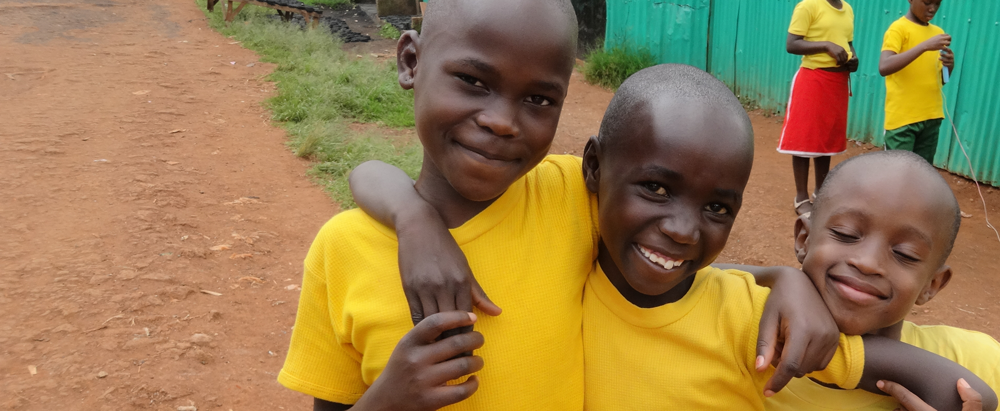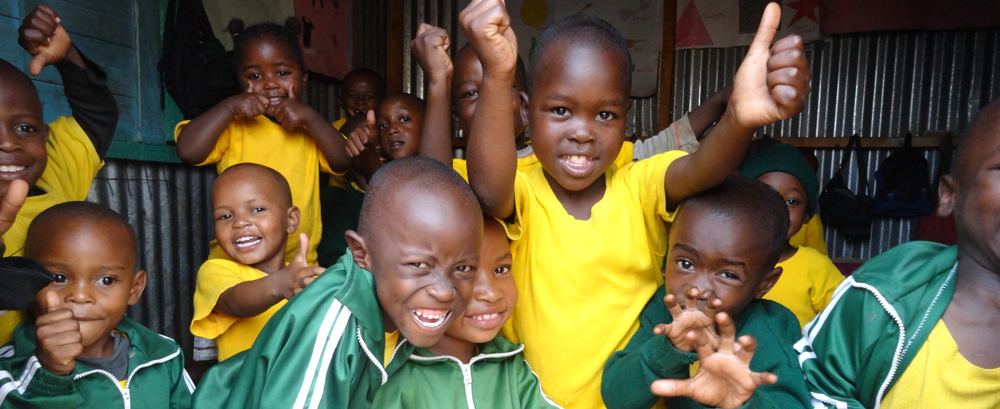Seeds of a Medical Clinic
The Need for Nuance
In February 2014, Hamomi leadership agreed that due to our land purchase, we could take our first baby step towards the long-theorized Hamomi Medical Clinic.
Since its launch in 2008, our Medical Program had grown slowly over the years, and by 2014 we were providing pretty robust medical care, (annual check-ups, emergency care, and preventative measures via pre-emptive services and education). However there were some glaring shortcomings when it came to a student on any given day who wasn’t feeling well. The local clinic we partner with, Afya Bora, is about a half mile away – quite a distance to ask a sick kid to walk. Then there are those kids who aren’t that sick. They need an adult in a white coat to feel their forehead and give them a place to lie down; administer something chewable and ‘grape’ flavored. Maybe it’s the medicine that helps or maybe it’s the care of a grown-up who listens to them, validates their feelings and comforts them. Medical care, especially for children, is multi-faceted, and we know that a combination of all elements of care is crucial.
This is nuanced, and when you add nuance to a medical regimen, personal relationships are key. Take for example a child whose disposition alters. Maybe he seems more tired or his grades drop – this child might not be ‘sick’ per se, so we might not send him off down the road to the clinic to report that he seems like he’s ‘dragging’. However, our own clinic and our own staff members who develops relationships with the children over time can act as caregivers in this situation. These staff members can take their physical concerns seriously, and provide safe, confidential conversation. Maybe this kid is having trouble at home, but starting with the physical manifestations, sitting with an authority figure in that white lab coat, calling it a tummy ache, developing trust, we can eventually get to the heart of the problem. We can’t send him off to a clinic for this kind of care. The idea of a Hamomi Medical Clinic was as much for nuanced care as for specific medical concerns; it could add one more place at Hamomi where our kids feel safe, secure and free.
Theoretically this would have positive health effects too – but that too we really didn’t know. This wasn’t going to alter how we respond to a severe medical situation, this wasn’t going to change much of that acute coverage, but it was going to add more ‘soft’ care. It is difficult to prove that this will work before you try. So we decided we just had to try.
A big question hung in the air: Where to start? We started once again in the only way that has ever come naturally to us at Hamomi, and proven over and over again to be our most effective tool: we started by developing relationships.
“I’m free on Saturdays”
Caroline Odhiambo is a seasoned clinician who had been a good friend to Hamomi for years. She provided Hamomi with perspective and expertise, so when it came time to figure out these next steps, she was my obvious first call. Sitting with her over coffee, I was expecting to pick her brain a bit and hopefully gain some clarity on what to do next. My guess was that ‘next’ was some form of paperwork – red tape to jump through, applications to the Ministry of Health, shaking hands with somebody who would be between Hamomi and clinic.
Caroline and I chatted for a while and she got increasingly excited about services she identified that Hamomi needed. I clearly needed to find an expert who could implement her ideas. I was trying to imagine finding someone I trusted enough, who could bring the kind of perspective and experience and wisdom that Caroline has. On the one hand it’s simple – just get someone to come on by Hamomi once a week, assess the students, form those relationships over time, prescribe things if necessary, and learn what’s going on with the health of the Hamomi kiddos. On the other hand it’s super complicated – no space, limited funds, logistics of coming to Hamomi are complicated, and how in the world do we find the right person to work with us while we hammer out the details? Actually tweak that slightly: How in the world do we find the right person who wants to lead us in hammering out the details?
Slightly overwhelmed, I asked Caroline, “So, what should we do next – like, do you know anybody who could help with this?”
Caroline didn’t miss a beat before responding with: “I’m free on Saturdays.”
Suddenly this felt possible.
Jump forward a couple meetings and we had a plan. Caroline and a nurse colleague of hers would start coming to Hamomi on Saturdays for a very reasonable fee to do check-ups and form those relationships. We had no space, no pharmacy, limited first-aid supplies, no stethoscope, no scale, no bed…but we potentially had found the right person to forge this partnership with, so there was no reason to wait to get started. Where to have the pop-up clinic? Raphael and Musumba offered their directors’ office.
So we know how we want to get started, but then how should we analyze it to be sure it’s working? How do we measure that the girls going through puberty feel comfortable and safe talking to Caroline? How do we mark that a boy with nothing ‘wrong’ who comes in and talks with a nurse about his slight tummy ache benefitted from the clinic? We didn’t know. But that also didn’t seem like a reason to wait. The plan was simple. Hire Caroline to get started and we’ll check in as a team in one year and see if whatever we’re doing is working.
The Numbers that Follow
Fast forward one year to March, 2015.
I returned to Hamomi for our annual audit and workshops and high on our list of things to discuss was the Medical Program. How was this Saturday pop-up clinic working? What does the Hamomi staff think of Caroline? What do the students think of Caroline? What does Caroline think of our staff and students? And most importantly: is it working? If it is, what does ‘working’ mean? Obviously the goal is healthier, happier, more successful kids, but how do you pinpoint specific correlations? We gave Caroline close to nothing to work with in order to be effective – so if she was unable to be effective, that could just be a reflection of too few materials and resources.
I’ll admit I was nervous about starting to ask these questions, because Hamomi’s comprehensive care makes it really difficult to claim specific correlations. All your services combine to be effective. Would we be able to show numerically that Caroline was effective?
Two days later, hand-wringing was over. By all measurements, it was working.
The staff love Caroline, Caroline loves the staff. The kids love Caroline, Caroline loves the kids. With what few resources Caroline had, she found a way to be effective. One of the most astounding examples was her push for better sanitation, quizzing every student she met on good hand-washing practices. This led to a staff and student-wide hand-washing regimen. By the end of the year, our use of over-the-counter stomach medication (Fragyl) dropping by 99%, (in one year, we went from going through 1,000 tablets a month to 10 tablets a month). We had discussed for years as a staff the need for better hygiene practices, and there was plenty of soap and water around Hamomi for this exact purpose, but nobody had lit a consistent fire under this idea to create passion and enthusiasm for it, until Caroline.
On at least two recorded situations, Caroline’s bond with a student allowed a student to open up about an unsafe living situation, which allowed Hamomi staff to act quickly to get that student into a different home. (In these situations, a Hamomi teacher takes in the student usually.)
Caroline was able to identify our most common ailments by tracking the prescriptions she was writing, allowing Hamomi to create a medical supply ourselves instead of going out to a pharmacy to fill prescriptions. This includes things you’d expect, from children’s tylenol to amoxicillin, which once Caroline tracked our needed quantities, we could immediately cut out the trip to the pharmacies by buying in bulk for ourselves. This also includes things that were going unnoticed – like the fact that our kids are suffering from a common, very contagious fungal issue that was misidentified as worms. Caroline figured it out quickly, but it’s so rampant and so contagious that treating it on a case-by-case basis just meant the kids kept giving it to each other. So we nuked it by buying tons of anti-fungal topical cremes and tablets and distributing them to all the kids and families, hopefully ending the perpetuating problem for good, (to be assessed next month in September, 2015).
Because Caroline solved the most pressing, top-tier issue, (stomach issues primarily), the kids stopped complaining of stomach aches and started complaining about something else, allowing her to identify the next wrung of issues. Hiding behind all those stomach problems were headaches. A large portion of the kids are complaining now of headache, and in no obvious connection to anything else going on in their lives or other ailments in their bodies. Caroline’s instinct is that the issues is dehydration. In April, we bought all the kids water bottles, convinced the teachers it was a good idea, introduced water-drinking during classes, and are making hydration education a cornerstone of Caroline’s Saturdays.
What sits lurking underneath those headaches? We’ll see. And below that? We’ll see then. After the more pressing issues are solved, we will get the luxury of diving into less and less pressing concerns, eventually getting to things like cavities and astigmatism. We’re looking forward to it!







